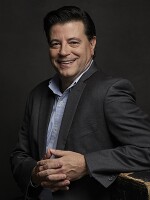There’s the flute we’ve all seen, maybe even played before, that’s called a C flute. But what about the alto flute? Or the ominous sounding subcontrabass flute? That particular flute is built with 15 feet of piping, and it’s played standing up. The Connecticut Flute Orchestra plays them all in a concert Saturday, Sept. 17, in New Haven.
It marks the ensemble’s first indoor concert since the onset of the pandemic.
Flutist (or flautist, either is acceptable) Helene Rosenblatt founded the CTFO in 2017. She said there are plenty of flute ensembles out there, but she wanted to emulate the sound of the Los Angeles Flute Orchestra, which uses all of the different flutes.
“If you put a bunch of C flutes and piccolos together, it can be hard to listen to for a long time,” Rosenblatt said. “But you add in a bunch of alto flutes and bass flutes, and then you start putting the real bottom in with the contras and sub-contras, and all of the sudden you have something that sounds more like an organ.”
Rosenblatt also wanted to make sure the CTFO had the highest-quality players. Most of the 18 members of the ensemble have advanced degrees in music, and all of them play in other ensembles in the area.
But there are challenges playing in a flute orchestra like the CTFO, said Rosenblatt.
“It gets tiring for players playing on the big instruments,” Rosenblatt said. “You’ll notice players swapping around during the performance so they get a break and go to C flute. That bass flute, as you get older, starts to get heavy.”
Repertoire for flute orchestra can also be a challenge. Rosenblatt said there are plenty of arrangements of existing works written for flute orchestra. Harder to find are original works for the ensemble, but Rosenblatt thinks that is changing.
“In the last 10 years, there’s been a flurry of composers writing for flute orchestra, or flute choir as it’s called, which includes contrabass flute parts.”
The Connecticut Flute Orchestra performs Saturday at 4 p.m. at Garner Recital Hall on the campus of Southern Connecticut State University in New Haven.


